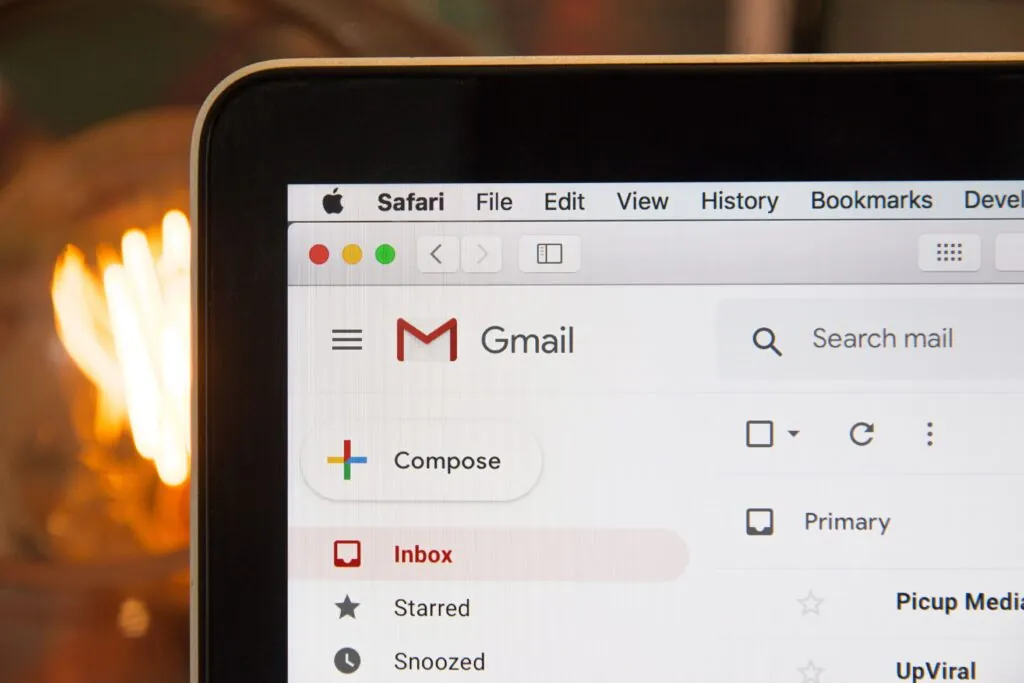How to Ensure a Successful Email Marketing Campaign with Email Warming-Up
The rise in privacy and security regulations has changed marketing, mostly for the better. But that doesn’t mean it’s made our jobs as marketers any easier.
Our duties have become much more complex and technical over the years. We are required to earn and maintain a good reputation not just with our paying customers but also with the platforms we use to acquire those customers.
Luckily, some of our most beloved and reliable channels remain in our tool belt, like emails, albeit we must incorporate additional strategies to ensure the success of our email marketing campaigns.
Enter email warm-up, the best way to ensure your messages are delivered to your prospects’ inboxes and not to spam. But exactly how do you warm up an email? Well, it’s a bit more complicated than nuking last night’s pizza, but we’ve broken the process down step-by-step so you can warm up that cold email quickly.
Let’s get to it!
What is email warm-up?
Email warm-up is an important email marketing campaign strategy that involves gradually increasing the volume of emails you send from a new or dormant account. A strong domain name is the foundation of cold outreach, so find a trusted domain name and warm it effectively before you begin your campaigns.
The objectives include:
- Establishing a positive reputation with email service providers (ESPs).
- Avoid being flagged as spam while building trust with ESPs.
- Demonstrating that your email account is legitimate.
- Improving opening rates by sending valuable content to real subscribers.
Why warming up an email account is important
Warming up an email account improves the deliverability of your email messages. By following best practices and gradually increasing the volume of emails you send, you can establish a positive email reputation and engage your subscribers with valuable content.

How to warm up an email domain
Manual Email Warm-Up
Manual email warm-up can be a tedious yet effective process. Here are the steps you can follow to manually warm up an email account:
Verify your email domain: Make sure your email domain is properly verified with your email service provider to help establish your email account as a legitimate sender.
Start with a small number of emails: Begin by sending a small number of emails (10-20 per day) to your most engaged and active subscribers. This will help you avoid triggering spam filters and allow you to gauge the response rate of your emails.
Use a consistent sending schedule: Establish a consistent sending schedule for your emails to help build trust with ESPs. This could mean sending emails at the same time every day or on the same days of the week.
Gradually increase email volume: Slowly increase the number of emails you send over the course of a few weeks. This allows you to build a positive reputation with ESPs while ensuring that you don’t get flagged as spam.
Monitor email metrics: Keep a close eye on email open, click-through, and unsubscribe rates to make sure your content is engaging. Adjust your email copy and frequency based on the feedback you receive.
Automated Email Warm-Up
Automating email warm-up can be a more convenient way to establish a positive reputation.
Here are some steps you can follow to automate email warm-up:
Choose an email warm-up tool: There are various tools available that can automate email warm-up, including Mailwarm, Warmup Inbox, and MailGenius. Choose a tool that is compatible with your email service provider and offers the features you need.
Set up your email account: Connect your email account to the warm-up tool and configure the settings to match your preferences. This includes entering your email address and password, setting up the email server and port settings, and using a password manager to securely store and manage your login credentials for efficient and secure access.
Define the warm-up schedule: Set up a warm-up schedule that gradually increases the volume of emails you send over a period of days or weeks.
Monitor email metrics: Keep an eye on email metrics to determine if your emails are resonating with your subscribers. Use the data to adjust your email content and frequency as needed.
How long does it take to warm up an email?
The time it takes to warm up an email account can vary depending on several factors, including the volume of emails you send, your email service provider, and the quality of your content. It’s recommended to gradually increase the volume of emails you send over the course of a few weeks to several months. Here are some guidelines for how long it might take to warm up an email account:
- Initial warm-up period (1-2 weeks): During the initial warm-up period, you should send a small volume of emails (10-20 emails per day). The purpose of this phase is to establish a baseline level of engagement and avoid triggering spam filters.
- Gradual volume increase: After the initial warm-up period, you can gradually increase the volume of emails you send each day or week. This could mean adding 10-20 emails per day, or increasing the total volume by a set percentage each week.
- Ongoing monitoring: Throughout the warm-up period, you should closely monitor email metrics. Again, use this data to adjust your email content and frequency as needed to ensure that your emails resonate with your audience.
It’s important to be patient and consistent when warming up an email account. The process can take several weeks to several months, depending on the volume of emails you send and the quality of your email content.
How to keep your email domain reputation healthy
Maintaining a healthy email domain reputation is crucial for ensuring that your emails are delivered to your prospects’ inboxes. Here are some best practices you can follow to keep your email domain reputation healthy:
Use a consistent sending schedule: Establish a consistent sending schedule, such as sending emails on the same day and time each week.
Provide valuable content: Your emails should provide valuable content that meets the needs and interests of your target audience. Avoid using spammy, salesy, or misleading verbiage, and ensure that the content of your emails matches the subject line.
Maintain a clean email list: Regularly perform email verification to identify and remove invalid email addresses, reducing the risk of high bounce rates.
Use a dedicated IP address: Like hanging out with the wrong crowd, sharing an IP address with a disreputable domain can damage your reputation. If you want to keep your rap sheet clean, consider investing in a dedicated IP address.
Maintaining a healthy email domain reputation requires consistent effort and attention to email best practices.
What is cold email marketing?
Unlike inbound email marketing, where the email recipient has given permission to receive emails, cold email marketing involves reaching out to individuals who have not expressed interest in or are unaware of your product or service. Yet it can be an effective way to reach new prospects and generate leads.
How to create a cold email marketing strategy
Creating a successful cold email marketing strategy involves careful planning and execution.
Here are some steps you can follow:
- Define your target audience: Determine who your ideal customers are and identify their needs and pain points. Use this information to create a targeted list of recipients.
- Create a compelling offer: Develop an offer or value proposition that will entice the recipient to take action.
- Personalize your message: Personalize your message to each recipient by addressing them by name and tailoring the content to their specific needs and interests.
- Keep it brief: Keep your email concise, focusing on the benefits of your offer and providing a clear call-to-action.
- A/B test your emails: Experiment with different subject lines, content, and calls-to-action to determine which messages are most effective in generating responses.
- Follow up: Send follow-up emails to non-responders or recipients who expressed interest in your offer but have not yet taken action.
- Measure results: Track key metrics such as open, click-through, and conversion rates to evaluate the effectiveness of your cold email marketing campaign and make adjustments as needed.
- Maintain compliance: Ensure that your cold email marketing campaign follows email marketing laws and regulations, such as the CAN-SPAM Act, to avoid being marked as spam.
By following these steps, you can create a targeted and effective cold email marketing strategy that generates leads and grows your business.
How to warm up a cold email list
Warming up a cold email list involves taking steps to establish a positive email reputation and gradually increasing the volume of emails sent to the list over time. Here are some steps you can follow to warm up a cold email list:
Verify email addresses: Use an email verification service to ensure that the email addresses on your list are accurate and active. This will help prevent your emails from bouncing and damaging your email reputation.
Segment your list: Divide your email list into smaller segments based on geography, industry, or job title. This will allow you to tailor your emails to the specific needs and interests of each group.
Start with a small volume: Begin by sending a small volume of emails to each segment of your list, gradually increasing the volume over time.
Personalize your messages: Address each recipient by name and tailor your message to their specific needs and interests.
Provide value: Offer something of value to the recipient, such as a free trial or helpful information to help establish trust and credibility.
Monitor email metrics: Keep an eye on key email metrics and use this data to adjust your email content and frequency as needed.
Follow up: Send follow-up emails to non-responders or recipients who expressed interest in your offer but have not yet taken action.
By following these steps, you can gradually warm up a cold email list and increase the likelihood that your emails will be delivered to your recipients’ inboxes and generate responses and conversions.

What’s Next?
Warming up your domain may not be the most exciting part of email marketing, but it’s necessary to achieve long-term success for both inbound and outbound strategies. If you’ve already started email marketing without warming your domain, don’t despair. You always have the option to start fresh with a new domain or pop your current email into a warm-up tool.
Keep in mind that mastering email marketing doesn’t happen overnight. It takes time to learn the ropes, but you’ll get there one email sequence at a time.
Customers Also Ask
What is the fastest way to warm up an email domain?
If you need to warm up your domain fast, invest in an email warm-up tool. By automating your warm-up strategy, you’ll achieve a consistent follow of messages to and from your email address. In turn, ESPs will more quickly recognize your domain as reputable.
What is an email warmup tool?
An email warmup tool is a software application that helps businesses and email marketers gradually increase their email sending volume to establish a positive sending reputation with email service providers (ESPs) and avoid being flagged as spam.
What is email marketing vs. cold email marketing?
Email marketing is a permission-based approach to sending emails to people who have opted-in to receive your messages. These individuals have typically signed up to receive updates, newsletters, promotions, or other communications from your company. On the other hand, cold email marketing is a strategy for sending emails to people who have not previously expressed interest in your product, service, or brand. Cold email marketing aims to generate leads, create awareness, and drive sales by reaching out to people who fit your ideal client profile.


